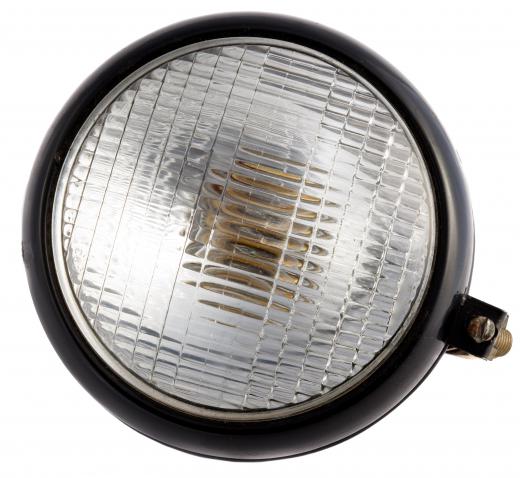What is Nautical Twilight?
 Mary McMahon
Mary McMahon
Nautical twilight is a period in the morning and evening when the sun is between six and 12 degrees below the horizon. Some visible light is present, but not enough to conduct detailed activities without the use of artificial light, and the horizon tends to be somewhat indistinct during this period. People refer to this time of day as “nautical twilight” to reference the fact that sailors often took navigational observations during this time, since the visibility was ideal.
While many people think of twilight as a time roughly between when it is not totally dark and when it is clearly light outside, this period of the day is actually broken into several distinct categories. Civil twilight occurs when the sun is less than six degrees below the horizon, allowing people to see things clearly, although the sun is obviously on the way up or down. Next comes nautical twilight, followed by astronomical twilight between 12 and 18 degrees, and when the sun is more than 18 degrees below the horizon, it is considered night.

In the morning, people may refer to nautical twilight as “first light,” the period when light first begins to be visible and the sky slowly starts to flush with color as the sun comes up. Haze and other obstructions to visibility tend to be low during this period, although cloud cover and fog can interfere with the perception of first light. People usually need headlights to drive and artificial light to work outdoors during nautical twilight.
At night, nautical twilight is sometimes called “nightfall,” referencing the fact that the sky is rapidly starting to darken, and it is soon going to be so dark that artificial light will be a necessity. Visibility can be tricky during this time, as people may think that it is lighter than it really is, and they may therefore refrain from using headlights and other aids to visibility, which can result in accidents.
The length of time spent in twilight varies, depending on where in the world one is, and what time of year it is. Twilight tends to be the longest in the poles, and the shortest around the equator; in Alaska, for example, twilight can last several hours during some periods of the year, while in parts of Africa, light levels go from full daylight to night in 20 minutes. Specific information about twilight times and length is usually provided in sunrise-sunset charts issued by organizations which provide weather information.
AS FEATURED ON:
AS FEATURED ON:











Discussion Comments
@ PelesTears- There actually is a movie shot in a town in Alaska where the sun sets, leaving twilight to blanket the town for a month. The movie is called 30 days of night, and it is actually a good movie as far as vampires are concerned. These are not the types of vampires that sparkle in the sunlight...oh no, these are the superhuman creatures that kill at will to suck blood. Basically, a group of vampires enters this town as twilight falls over the residents and go on a month long killing spree. If you are into horror movies, you should check this one out.
I have heard that places in Alaska and the Arctic region are in perpetual twilight for certain times of the year. I have also heard that these same places have months of perpetual daylight on opposite times of year. This would be such an amazing experience. I would like to take a trip to one of these towns and stay for a week during the month of darkness. You would think that this would make a great setting for a vampire movie since the creatures supposedly dislike sunlight.
What an interesting article. I have never thought about the length of twilight, but now that I have read this article, I have noticed the difference. I used to live in Vermont, and there was a place I would go to watch the sunset. It was a tall point that you had to hike about a quarter mile too, but once you were there, you could see the entire river valley about 500 feet below. It was the perfect location for watching the sunrise. A group of friends and I would come here after a long night of partying, or in the mornings while we were on camping trips in the area. The sunrises at this area would last about an hour and the change from dark to light was very gradual.
I now live in Phoenix, and I occasionally drive to South Mountain for sunrise. The sunrises are noticeably shorter, but equally as serene. I often see coyotes and roadrunners making their way out of their den to forage for the day.
Post your comments